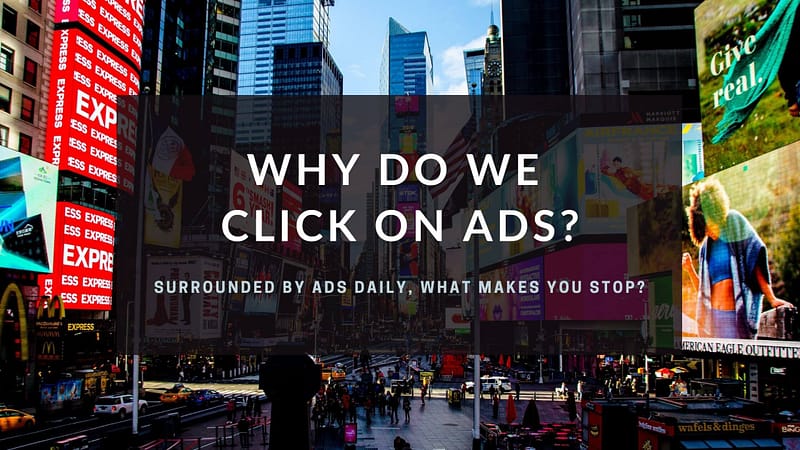Often when we are searching the Internet we are on a hunt, we are on a mission and looking for something particular. Ads must convince us it is worth our attention and attract us enough that we are willing to take a detour to see what it’s all about.
According to Psychology Today, it takes only 7 seconds for someone to form their first impression. It’s up to you what they see in those initial 7 seconds. If an ad doesn’t have a strong enough pull that it will stop you from what you were doing, why would it stop your customers? The psychology behind not only why we click on ads, but also why our customers click on ads, starts with these key components.
Attention-Grabbing Information
Key pieces of information can be included within your advertisement to grab the attention of possible customers and divert them from their original path. Customers can easily visualize a breakdown of exactly what they can expect, including discounts, special offers, and shipping incentives. This information should be included where it can be viewed easily, without extra time being required to look for it.
These details can influence shopping behavior and provide extra attention to an ad campaign. This attention can be the final push a customer needs to click to find out more information or complete a purchase.

Think of it like visiting a shopping mall. As you walk around most stores have ads posted in their display windows. Attempting to get you to stop whatever you were doing and come in by using different sales, promotions, and offers.
Credibility
With the increasing saturation of the e-commerce market and the ads that come along with that, possible customers now have to decide if the ads they see are from reliable and credible sources.
Words that show power, including “Official”, “Licensed”, and “Authentic”, can be included within the ad copy and any shown headlines to increase credibility. As a result, ads that provide the impression of reliability and credibility show an increase in the number of clicks and attention they receive.

An example of this is the Search Engine Results Page (SERP) for the Google search “pokemon cards”. Two different ads came up on the first page of results, one for StockX and the other for Troll and Toad. As Pokemon has grown in popularity this year, the amount of scams surrounding it has grown along with it.
The StockX advertisement has put credibility keywords in their ad copy twice. First authentic in the beginning of the ad when listing the types of products they offer, then again at the end of the ad copy letting potential customers know that each product being sold has been authenticated. Since StockX is a website allowing its customers to both buy and sell products, it’s important for them to quickly portray they are a reliable and credible site.
The other ad, Troll and Toad, states what types of products they are selling and includes a free shipping promotion to grab attention. However, they have not included any statements or keywords stating their credibility.
When I made this search while shopping for a birthday gift, I know which I clicked on first.
Trust
Effective ad campaigns are designed so that the contents of an ad match the keywords that cause it to be triggered. These ads have content contained in the title, description, and image (if one is included), which matches what users of that keyword are searching for and provides information to them quickly and efficiently. These effective ad campaigns not only receive more clicks from possible customers, but increase trust.
One way to quickly lose that trust with possible customers is to have your ad promise one thing while providing another. Click baiting, by luring someone in with a false promise until they click through, ruins any brand and company trust that you once held. In addition to click baiting, poorly designed campaigns, incorrect grammar, and insufficient focus on brand recognition can decrease the trust held by possible customers.

The photo being held shows the Venice Canal in the past being compared to what it looks like currently. Like ads using click bait content, you are drawn in to what is being shown and showcased, in this case it’s the photo of the Venice Canal in the past. However, what you are really going to receive, like if you visited the Venice Canal, isn’t quite what you expected. This is a quick way to destroy any trust that has been built.
Follow Up
Remarketing remains successful by keeping your brand or company at the forefront of a possible customer’s mind. When a customer has shown previous interest, ads can be targeted to them during the buying cycle to increase clicks and conversions.
The ads that possible customers are likely to click contain the same features of the ads that you are likely to click as well. Does your ad have what it takes to get you to click through? If it doesn’t, the first thing to do is take a step back and determine what changes need to be made.
Our team of PPC experts are ready to help with your ad campaign. Reach out today for your free consultation!




